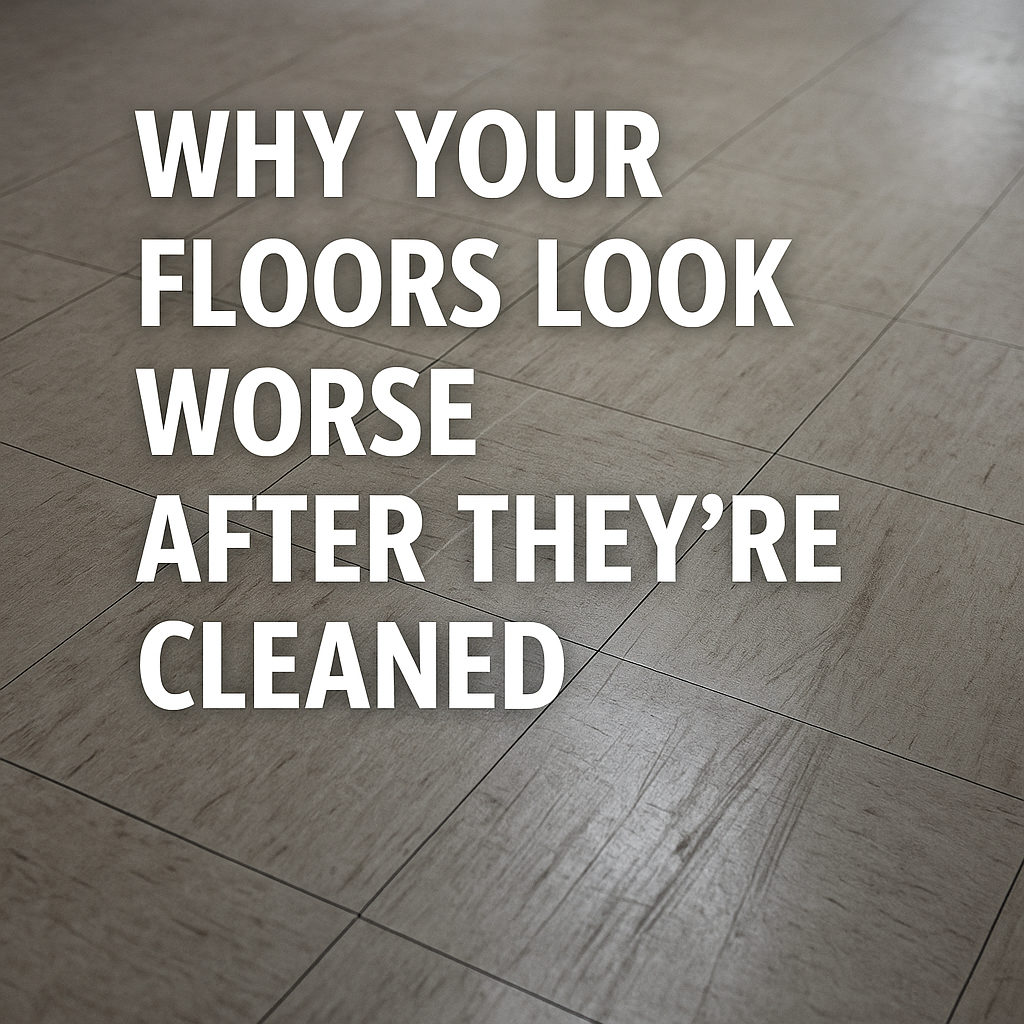(listen to audio)
You put real money into your floors, whether it was VCT, polished concrete, or something built to hold up under traffic. They looked great when they were first installed. But now they’re dull, streaky, or always look dirty no matter how often they’re cleaned.
And the frustrating part?
You’re still paying for nightly cleaning. So why do the floors keep getting worse?
In most cases, it’s not neglect. It’s chemical damage. Your floors aren’t being skipped, the wrong products are slowly wrecking them.
The Issue Isn’t Effort—It’s Damage
When your floors look dull or streaky the morning after a cleaning, it’s easy to assume someone’s cutting corners. But the truth is, most floor appearance issues don’t come from neglect, they come from long-term chemical damage. The floor might be getting cleaned regularly, but if the wrong products are being used, it’s quietly being destroyed one mop at a time.
High-pH Cleaners Strip More Than Dirt
A common mistake in commercial cleaning is using high-pH degreasers across general floor areas. These products are designed for kitchens or warehouses, not for office floors, laminate, or VCT. Used frequently, they wear down the finish and leave behind a dull, hazy surface that never quite looks clean, no matter how often it’s mopped.
Not All Floor Cleaners Are Safe for Your Floors
Even off-the-shelf multi-surface cleaners can cause problems. Most aren’t pH-neutral, and they leave behind residue that builds up over time. The result? Sticky floors, dirty-looking corners, and a cloudy appearance that undermines the actual cleaning work being done. It looks like neglect, but it’s really poor chemical selection and no quality control.
The More You Mop, the Worse It Gets
This is where it fools people. The cleaner is showing up. The mop is hitting the floor. But because the chemical is too harsh, the surface keeps degrading. Mopping more doesn’t fix the problem. It accelerates it. And now the floor looks like it’s being skipped, even though it’s not.
Fixing It Isn’t as Simple as Switching Products
Once the finish is damaged, cleaning alone won’t bring the floor back. You may need buffing, stripping and refinishing, or even surface replacement depending on how far it’s gone. That’s an expensive outcome for something that started with a $10 bottle of the wrong chemical.
What to Watch for in Your Building
If you’re noticing haze, streaks, or sticky spots even after a recent cleaning, that’s a red flag. So are complaints from staff or tenants about how the floor feels underfoot. These are often the first signs that something’s wrong with the chemical process, not the cleaner’s effort.
Clean Isn’t About More. It’s About Right.
There’s no such thing as overcleaning a floor. But there is such a thing as cleaning it wrong, every single night. The wrong product, the wrong process, or a lack of basic training can take a clean, polished floor and wreck it within a few months.
If your floors are getting worse the more they’re “cleaned,” it might be time to stop blaming effort and start looking at the bottle.

